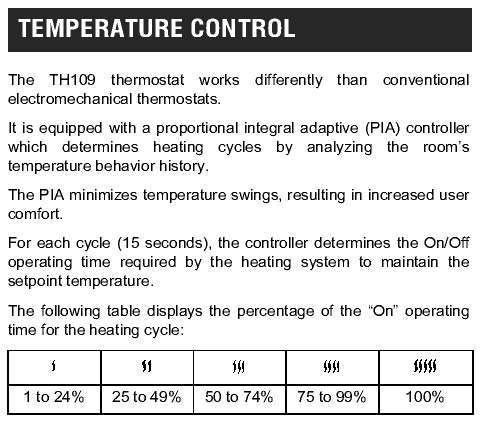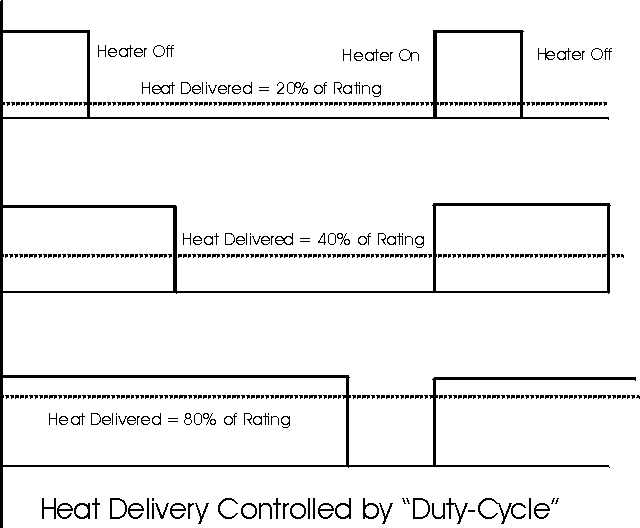

|
Technology
|
Pro
|
Con
|
Notes
|
|---|---|---|---|
| Mechanical sensor and switch | Relatively inexpensive | Allows wide swings in temperature, easily 7 degrees Fahrenheit, forcing a higher set-point to avoid temperatures dropping into the "discomfort" zone. This wastes energy. | Original Barclay thermostats used a bimetallic strip to sense temperature. "Bulk Buy" retrofit employs a "double-bellows" as sensor, and a microswitch for power control (giving that "click" sound). |
| Electronic sensor, and relay for power control | Tighter temperature control: temperature regulation can be +/-0.5 degrees C around the setpoint. Relay allows higher power handling (typically 20 Amps) than a totally electronic unit. | More expensive than the mechanical thermostats, often is four-wire, requiring knowledge of which wires are "supply" and which are "load" (baseboard). | The Aubetech TH110-SP series is the
only known model at this time. It employs a 15 minute "Cycle Time" (see
bottom of this page). |
| Electronic sensor and power
control (keywords are "TRIAC" and electronic switch) |
Tightest temperature control (+/-0.15 degrees Celsius), greatest comfort, silently "pulses" heater on for a few seconds at a time, keeping it "warm", and seldom hot. Safest for children, pets, furniture etc. | Higher cost, restricted to lower power loads than a relay model (maximum current handling is about 16.7 Amps). These usually employ a 15 second "Cycle Time" (see bottom of page). | Using the Fahrenheit mode gives finer control than use of Celsius, assuming the manufacturer allows one degree increments in both cases. |
| Programmable (available in both "relay" and TRIAC models) |
Greater energy savings achieved by lowering the unoccupied temperature. Some have only "day" and "night" periods; others also allow lowering the temperature on weekdays while you are at work. | These are more complicated because there is a clock to be set, day of week settings, and statutory holidays to be accommodated. | Some also have a "vacation" setting: while you are away the temperature is maintained at a constant lower setting (day and night) for greatest energy savings. |

| Aube Model # |
Rating at 240 Volts ( Current in Amps) |
Total Watts at 208 Volts (e.g. Barclay use) |
Program- mable? |
|---|---|---|---|
| TH108* or TH109* (TRIAC) |
3000 W / (12.5 Amp) |
2600 |
No |
| TH104** (TRIAC) |
3500 W / (14.5 Amp) |
3030 |
Yes |
| TH101** or TH106 (TRIAC) |
4000 W / (16.67 Amp) |
3467 (see disclaimer for use at 3500 Watts) |
Yes |
| TH110-SP (relay)*** |
Formerly 4800 W / (20 Amp), now 4000 W / 16.7 Amp |
~3500 | Yes |
